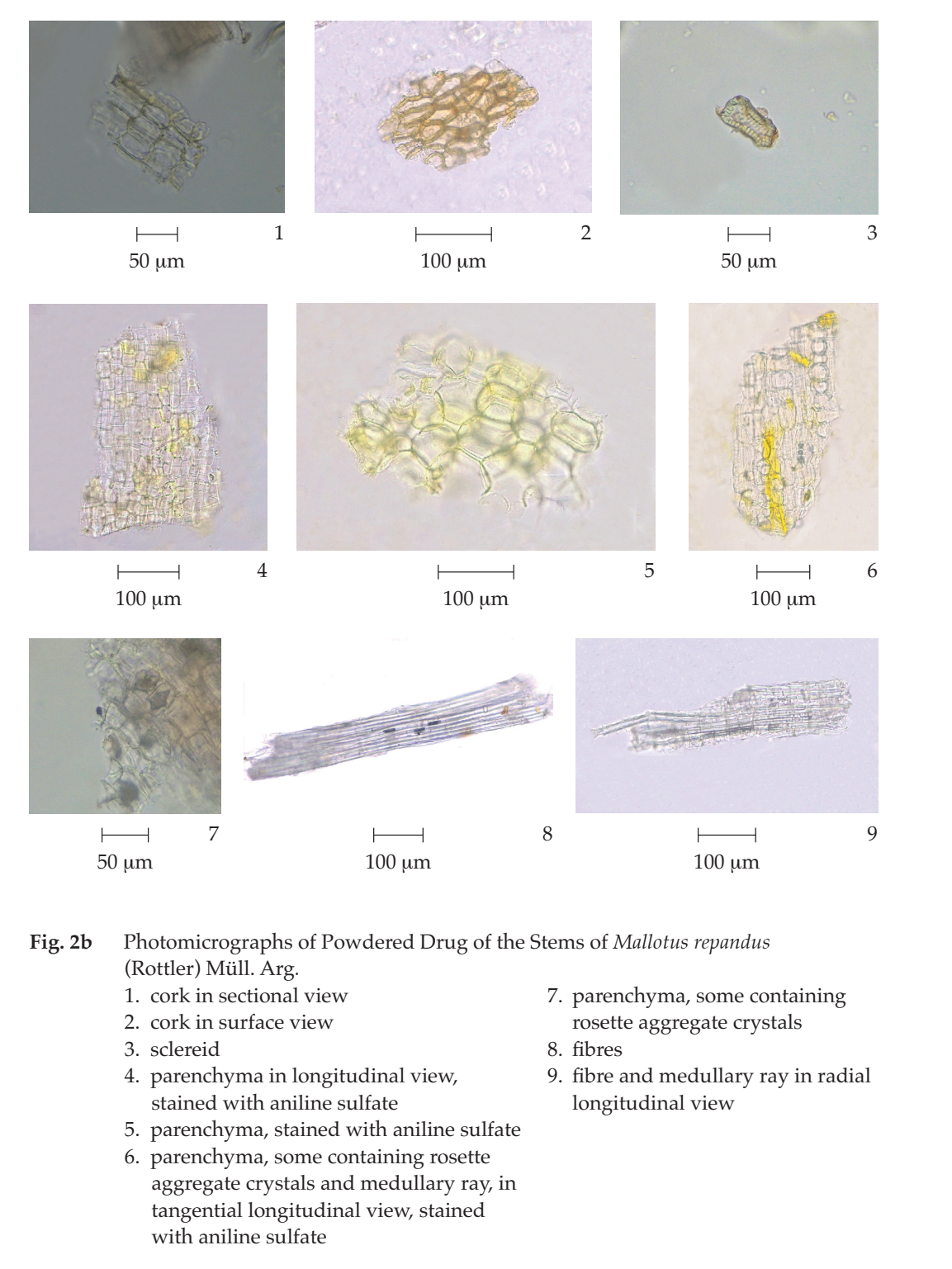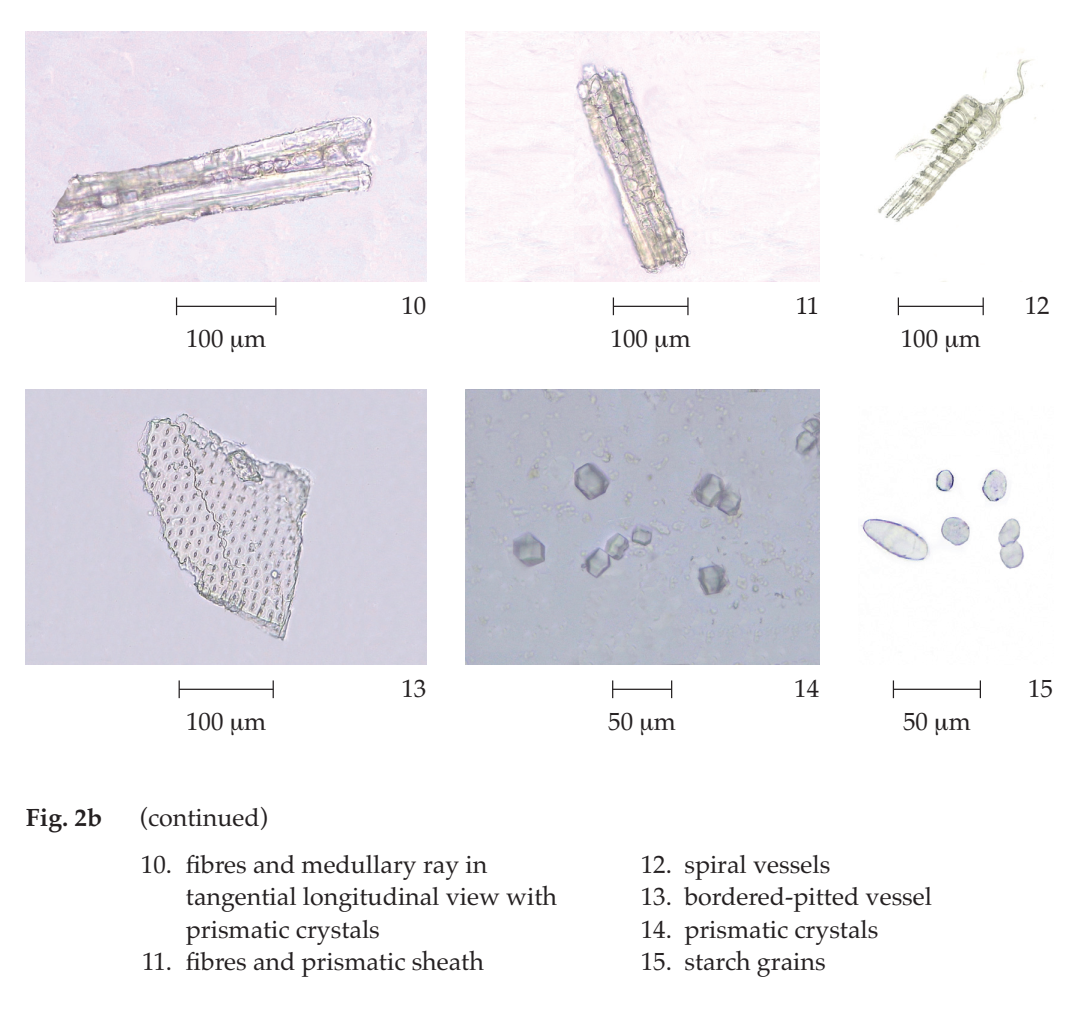ตำรามาตรฐานยาสมุนไพรไทย
Thai Herbal Pharmacopoeia
สำนักยาและวัตถุเสพติด กรมวิทยาศาสตร์การแพทย์ กระทรวงสาธารณสุข
Bureau of Drug and Narcotic, Department of Medical Sciences, Ministry of Public Health(Tinospora crispa (L.) Hook.f. & Thomson)
(Nelumbo nucifera Gaertn.)
(Centella asiatica (L.) Urb.)
(Centella Dry Extract)
(Centella Cream)
(Mesua ferrea L.)
(Piper sarmentosum Roxb.)
(Piper sarmentosum Roxb.)
(Pterocarpus santalinus L. f.)
(Santalum album L.)
(Senna tora (L.) Roxb.)
(Senna alata (L.) Roxb.)
(Senna Alata Tea)
(Piper retrofractum Vahl)
(Myristica fragrans Houtt)
(Andrographis paniculata (Burm. f.) Nees)
(Andrographis Capsules)
(Allium ascalonicum L.)
(Ocimum tenuiflorum L.)
(Curcuma longa L.)
(Turmeric Capsules)
(Turmeric Dry Extract)
(Turmeric Dry Extract Capsules)
(Arcangelisia flava (L.) Merr.)
(Curcuma sp.)
Harrisonia perforata (Blanco) Merr.
(Aristolochia pierrei Lecomte)
(Zingiber officinale Roscoe)
(Ginger Capsules)
(Ginger Tea)
(Cassia fistula L.)
(Nardostachys jatamansi (D. Don) DC.)
(Angelica sinensis (Oliv.) Diels)
Artemisia annua L.
(Ligusticum sinense Oliv. cv. Chuanxiong)
(Neopicrorhiza scrophulariiflora Pennell)
(Atractylodes lancea (Thunb.) DC.)
(Aucklandia lappa Decne)
(Terminalia chebula Retz.)
(Angelica dahurica (Hoffm.) Benth. & Hook. f. ex Franch. & Sav. var. dahurica)
(Kaempferia parviflora Wall. ex Baker)
(Hibiscus sabdariffa L.)
(Roselle Tea)
(Allium sativum L.)
(Zingiber zerumbet (L.) Sm.)
(Wurfbainia testacea (Ridl.) Škorničk.& A. D. Poulsen)
(Cannabis sativa L.)
(Myristica fragrans Houtt)
(Dracaena cochinchinensis (Lour.) S. C. Chen)
(Ficus racemosa L.)
(Hyptis suaveolens (L.) Poit.)
Clerodendrum indicum (L.) Kuntze
(Phyllanthus emblica L.)
(Citrus hystrix DC.)
(Citrus hystrix DC.)
(Areca catechu L.)
(Momordica charantia L.)
Moringa oleifera Lam.
(Aegle marmelos (L.) Corrêa)
(Solanum trilobatum L.)
(Morus alba L.)
Gynostemma pentaphyllum(Thunb.)
Makino
(Clinacanthus nutans (Burm. f.) Lindau)
(Cissus quadrangularis L.)
(Mimusops elengi L.)
(Zingiber montanum (J. König) Link. ex A. Dietr.)
(Piper betle L.)
(Capsicum annuum L.)
(Capsicum Oleoresin)
(Capsicum Gel)
(Piper nigrum L.)
(Piper nigrum L.)
(Eurycoma longifolia Jack)
(Thunbergia laurifolia Lindl.)
(Piper wallichii (Miq.) Hand.-Mazz.)
Senna garrettiana (Craib) H. S. Irwin & Barneby
(Terminalia bellirica (Gaertn.) Roxb.)
(Terminalia chebula Retz.)
(Caesalpinia bonduc (L.) H. Roxb.)
(Tarlmounia elliptica (DC.) H. Rob., S. C. Keeley, Skvaria & R. Chan)
(Hog Creeper Vine Dry Extract Capsiles)
(Hog Creeper Vine Dry Extract)
(Brachypterum scandens (Roxb.) Miq.)
(Lepidium sativum L.)
(Nigella sativa L.)
(Cuminum cyminum L.)
(Foeniculum vulgare Mill.)
(Plantago ovata Forssk.)
(Pimpinella anisum L.)
(Carum carvi L.)
(Anethum graveolens L.)
(Trachyspermum ammi (L.) Sprague)
Albizia procera (Roxb.) Benth.
(Acorus calamus L.)
(Tiliacora triandra (Colebr.) Diels)
Cyanthillium cinereum (L.) H. Rob.
(Orthosiphon aristatus (Blume) Miq.)
Murdannia loriformis (Hassk.) R. S. Rao & Kammathy
(Capparis micracantha DC.)
(Chrysopogon zizanioides (L.) Roberty)
(Cyperus rotundus L.)
(Cannabis sativa L.)
(Syzygium aromaticum (L.) Merr. & L. M. Perry)
(Boesenbergia rotunda (L.) Mansf.)
(Acanthus ebracteatus Vahl)
(Acanthus ilicifolius L.)
(Kaempferia galanga L.)
(Curcuma comosa Roxb.)
Betula alnoides Buch.-Ham. ex D. Don
Cannabis sativa L.
Carthamus tinctorius L
Mitragyna speciosa (Korth.) Havil
Mallotus repandus (Rottler) Müll. Arg
Azadirachta indica A. Juss. var. siamensis Valeton
Azadirachta indica A. Juss. var. siamensis Valeton
Punica granatum L.
Rhinacanthus nasutus (L.) Kurz
Baliospermum solanifolium (Burm.) Suresh
Curcuma aeruginosa Roxb
Boesenbergia kingii Mood & L. M. Prince
Senegalia rugata (Lam.) Britton & Rose
Acacia concinna (Willd.) DC.
Senegalia rugata (Lam.) Britton & Rose
Acacia concinna (Willd.) DC.
Senna alexandriana Mill. var. alexandriana
Cassia acutifolia Delile, Cassia angustifolia Vahl
Butea superba Roxb. ex Willd.
[Plaso superba (Roxb. ex Willd.) Kuntze, Rudolphia superba (Roxb. ex Willd.) Poir.
Pueraria candollei Graham
ex Benth. var. mirifica (Airy Shaw & Suvat.) Niyomdham
Streblus asper Lour.
Suregada multiflora (A. Juss.) Baill. (Gelonium
multiflorum A. Juss.
Mallotus Repandus Stem is the dried stem of Mallotus repandus (Rottler) Müll. Arg. [Croton rhombifolius Willd., Mallotus scandens (Span.) Müll. Arg., Rottlera scabrifolia A. Juss.] (Family Euphorbiaceae), Herbarium Specimen Number: DMSC 5264, Crude Drug Number: DMSc 1229.
Constituents Mallotus Repandus Stem contains phenolics such as bergenin. It also contains terpenoids, sterols, etc.
Description of the plant (Fig. 1) Scandent shrub or woody climber 2 to 10 m tall; dioecious; branchlet, petiole and inflorescence covered with yellowish to brownish simple and stellate hairs; glandular scale orange; stipule triangular, about 1 mm long, persistent or caducous. Leaves simple, alternate, ovate, triangular ovate to oblong-ovate, 2.2 to 11.4 cm long, 1.5 to 9 cm wide, apex acute or acuminate, base round to truncate, margin entire to somewhat denticulate with few glandular teeth, upper surface glabrescent, mainly hairy on nerves, with 2 to 4 extrafloral nectaries per side, lower surface light green, stellate-pubescent, with scattered yellowish granular glands, venation triplinerved, lateral veins 4 to 6 per side, ending to margin; petiole up to 8 cm long. Inflorescence terminal and axillary, solitary to groups of up to 4, sometimes branching; bract triangular, 1 to 1.6 mm long, about 1 mm wide. Male inflorescence up to 20 cm long; flowers in group up to 6 per node; male flower yellowish white to yellow; pedicel 3 to 3.5 mm long; sepals 3 or 4, elliptic, 2.8 to 3.2 mm long, 1 to 2 mm wide; stamens many, filament 1.8 to 2.2 mm long, anther about 0.6 mm long. Female inflorescence up to 12 cm long; female flower yellow; pedicel 1 to 2 mm long; calyx 3- or 4-lobed, about 3 mm long, lobe ovate, 2.3 to 2.8 mm long, 1 to 1.5 mm wide; ovary superior, dull light greenish, 2-loculed, densely hairy, glabrous, style brown, 0.3 to 0.4 mm long, stigma 3 to 4 mm long. Fruit a capsule, lobed, 6 to 8 mm long, about 1 cm wide, densely hairy. Seed subglobose, about 5 mm in diameter.
Description Odour, indistinct; tasteless.
Macroscopical (Fig. 1) Transverse or oblique pieces, 2 to 5 cm long, 1 to 4 cm in diameter; externally brown, longitudinally wrinkled and with numerous warty lenticels; internally off-white, light yellow or light brown.
Microscopical (Figs. 2a, 2b) Transverse section of the stem shows periderm, phloem tissue, xylem tissue, and pith. Periderm: numerous layers of rectangular cork cells, some containing brown substance. Phloem tissue: phloem ray, phloem parenchyma, and phloem fibres. Xylem tissue: xylem ray, vessels, xylem fibres, and primary xylem. Pith: parenchyma, some containing yellow substance or rosette aggregate crystals.
Mallotus Repandus Stem in powder possesses the diagnostic microscopical characters of the unground drug. Fibres and cork cells with brown substance are frequently seen.




Packaging and storage Mallotus Repandus Stem shall be kept in well-closed containers, protected from light, and stored in a dry place.
Identification
A. Heat 500 mg of the sample, in coarse powder, with 5 mL of ethanol on a water-bath for 10 minutes, allow to cool and filter. Place a few drops of the filtrate to a filter paper, allow the filter paper to dry, add 1 to 2 drops of a 20 per cent w/v solution of sodium hydroxide, and examine under ultraviolet light (366 nm): a blue fluorescence is detected.
B. Heat 500 mg of the sample, in coarse powder, with 10 mL of water on a water-bath for 10 minutes, allow to cool and filter. To 1 mL of the filtrate, add a few drops of a 1 per cent w/v solution of iron(III) chloride: a blue colour is produced.
C. Carry out the test as described in the “Thin-Layer Chromatography” (Appendix 3.1), using silica gel F254 as the coating substance and a mixture of 70 volumes of dichloromethane and 30 volumes of methanol as the mobile phase. Apply separately to the plate as bands of 10 mm, 40 µL each of solutions (A) and (B). Prepare solution (A) by macerating 1 g of the sample, in coarse powder, with 3 mL of methanol for 1 hour and filtering. For solution (B), dissolve 1 mg of bergenin in 1 mL of methanol. After removal of the plate, allow it to dry in air and examine under ultraviolet light (254 nm), marking the quenching bands. The chromatogram obtained from solution (A) shows a quenching band (hRf value 73 to 78) corresponding to the bergenin band from solution (B). Subsequently examine the plate under ultraviolet light (366 nm) through the cut-off filter; the band due to bergenin shows a light blue fluorescence; other one intense blue and two green fluorescent bands appear. Spray the plate with a 10 per cent w/v solution of phosphomolybdic acid in ethanol and heat at 105° for 10 minutes; the band corresponding to bergenin is brown and other two blue bands are observed (Fig. 3).
Loss on drying Not more than 9.0 per cent w/w after drying at 105° to constant weight (Appendix 4.15).
Foreign matter Not more than 2.0 per cent w/w (Appendix 7.2).
Acid-insoluble ash Not more than 1.0 per cent w/w (Appendix 7.6).
Total ash Not more than 8.0 per cent w/w (Appendix 7.7).
Ethanol-soluble extractive Not less than 3.0 per cent w/w (Appendix 7.12).
Water-soluble extractive Not less than 5.0 per cent w/w (Appendix 7.12).
